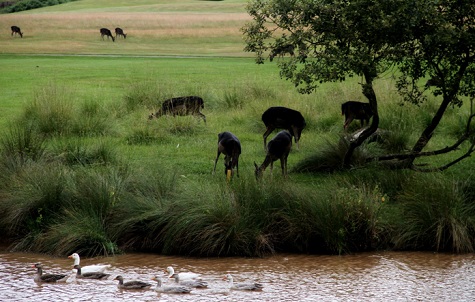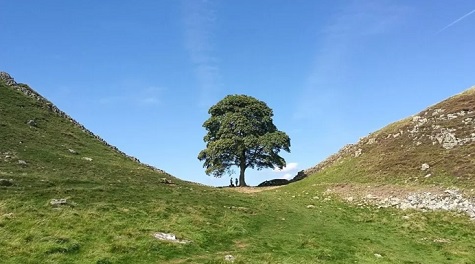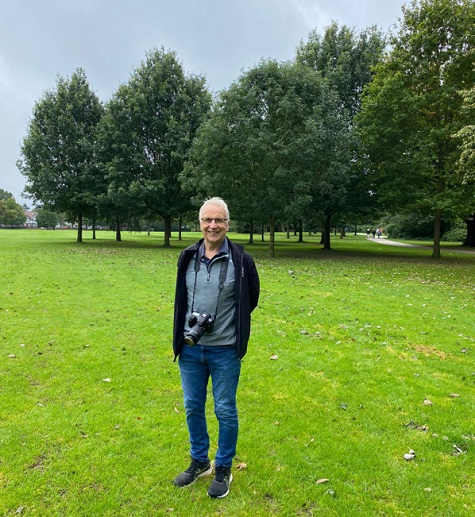This week, I’d like to reflect on some recent news stories that have made the headlines in connection to our natural environment.
First up is the report seen on the BBC that the numbers of the UK's most precious animals and plants are still falling, as a countrywide nature-loss crisis continues.
The report said that the loss of nature is outpacing investment and effort to tackle it.

The BBC said that the State of the Nature report found “16% of 10,000 mammals, plants, insects, birds and amphibians assessed were threatened. They include UK wildlife icons such as the turtle dove and hazel dormouse. The government has said it is committed to "increasing the amount of habitat for nature to thrive". But conservation organisations say more investment and a shift to much more wildlife-friendly farming and fishing are urgently needed.”
For me, this decline has been going on since the late 1960s when farming practices changed to a far more intensive method of farming, with larger fields being created, loss of hedges and natural grazing land being lost. Many habitats were also lost in the rebuilding of modern housing estates and road infrastructures throughout the UK and in more recent years households have extensively gravelled or paved their front gardens to accommodate car parking spaces.

Coupled with noise and pollution levels and increased human activities the sanctuary for animals, insects and birds has been eroded and lost.
Stopping the decline of wildlife numbers in the UK is a complex and multifaceted challenge that requires coordinated efforts from individuals, communities, governments, and organisations.
We need to restore and protect natural habitats such as woodlands, wetlands, meadows, and heathlands. Create wildlife corridors to connect fragmented habitats, allowing species to move and thrive.
We need to Implement conservation programs for endangered and at-risk species. Promote responsible breeding and reintroduction programs for local native species.
We also need to continue to reduce pollution from agricultural runoff, industrial activities, and urban areas. While at the same time promote sustainable farming practices that prioritize biodiversity conservation. We need to continue to encourage rewilding initiatives on unused or abandoned lands.

We must also manage and control invasive species that can harm native wildlife and ecosystems.
But more importantly, raise public awareness about the importance of wildlife conservation and the impacts of human activities while encouraging responsible behaviour in natural areas through education.
Vandalism
Which leads me on to the tragic news of the disgusting vandalism of the felling of an iconic native landmark - the 200 year old Sycamore Gap tree at Hadrian’s Wall, Northumberland.

The question on everybody’s mind is WHY would someone to do this to such a well-known and beloved landmark?
It is reported a 16-year-old was been arrested in connection with this incident. So again, why would a young person carry out this act of vandalism. For me there is a need in schools for us to deliver the importance and values of conserving and managing our important landscape assets, which in turn provide the habitat and food resources for wildlife to thrive and live and enhance our own living environment.
Can you really imagine a city / town with no natural landscape habitats or trees? It would be a desolate place to live and work.
Having trees and grass within cities and towns offers a wide range of benefits, both for the environment and for the well-being of residents. Trees absorb carbon dioxide and release oxygen through photosynthesis, which helps to improve air quality by reducing pollution and providing a source of fresh oxygen. They also trap airborne particles and pollutants, making the air cleaner for everyone.

Trees also provide shade and help cool the surrounding area through a process called evapotranspiration. This cooling effect can significantly reduce the urban heat island effect, where cities are significantly hotter than their rural surroundings, making urban areas more comfortable and reducing the need for energy-intensive air conditioning.
Urban green spaces also provide habitat and food for a variety of wildlife, including birds, insects, and small mammals. This promotes biodiversity and contributes to a healthier ecosystem within the city.
Trees and grass can act as natural sound barriers, reducing noise pollution from traffic and other urban activities. This can lead to quieter and more peaceful urban environments.
Access to green spaces has been shown to have positive effects on mental health and well-being. People who live in areas with trees and grass often report reduced stress, improved mood, and a greater sense of well-being.

Green spaces offer opportunities for physical activity and recreation, such as jogging, picnicking, and playing sports. This promotes a healthier lifestyle and encourages social interactions within the community.

Some trees I personally planted in 1973 in Kings Heath Park, Birmingham
Grass and trees can help manage stormwater by absorbing and slowing down rainwater runoff. This reduces the risk of flooding and helps replenish groundwater.
Trees and greenery enhance the visual appeal of cities and towns. They contribute to the cultural identity of a place and can be a source of pride for residents.
And finally, trees are effective at sequestering carbon dioxide, helping to mitigate climate change by reducing greenhouse gas concentrations in the atmosphere. Health Studies have shown that access to green spaces can lead to reduced rates of chronic illnesses, lower healthcare costs, and increased overall longevity.
Overall, incorporating trees and grass into urban environments can lead to a healthier, more sustainable, and more enjoyable quality of life for residents while also benefiting the environment and the economy.
Conservation measures are essential components of a successful strategy to protect and restore biodiversity in the country.
Industry publications
And last but not least, I was sad to hear that one of the longest running horticulture publications, Amateur Gardening magazine, is not going to be published any more.
This renown publication has been in existence for 139 years. Its editor Garry Coward-Williams said: "It was simply a question of ever-rising costs. Paper went up 20% last year, print costs have risen sharply, the cost of the cover mounted seeds has gone up this year and advertising revenue has dropped significantly in the last six months. It’s a cocktail we could not survive despite good news stand sales performance.
"No one wanted to see the oldest gardening magazine in the world close, least of all the staff and its publishers, who thought very highly of Amateur Gardening. I am sorry for the thousands of loyal readers and our long-standing and much respected contributors, but it’s time to say au revoir.”
For me it continues to be a worry seeing the decline of hard copy trade and industry magazines ceasing to exist. The loss of advertising revenues, the popularity of social media platforms and the internet have greatly impacted the way people go about their business.
We now have very few industry magazines left in existence. I can probably name perhaps fifteen that serve the landscape and amenity sector very well. They all do a sterling job in bringing the latest news and information to the many hundreds of thousands of grounds professionals who look after the UK’s land assets.